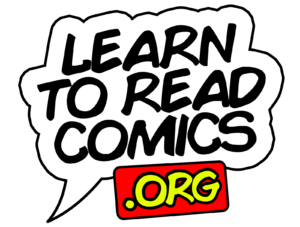The stereotypical view regarding comics is that it is a disposable means of entertainment, has crude language and no educational value or benefit whatsoever. Recent publications and research on this have seen a seismic shift in this perception. In a research paper published in 2011, Rapp emphasizes the importance of including comics in literacy instruction stating, “Comic books (or graphic novels) can teach literacy skills and critical thinking in ways that other formats can’t” (p.62). Moreover, in addition to deciphering words, readers must differentiate what different visual cues mean and readers must actively participate.
Rapp’s research paper illuminates the typical cycle of literacy training. While learning usually starts with picture books, moves gradually towards short stories and then levels up to the great works of literature, recent reports suggest that literacy activities that solely rely on textbooks is not the solution to maximize your teaching potential. Research has shown we have to broaden our use of multi-media and print forms to accommodate other learning styles. In 2003, The National Council of Teachers of English called “to broaden classroom materials to encourage a lifelong love of reading and to include comprehension experiences that focus on reading skills but also to help students transfer those skills beyond the written word” (p.64).
Comics and graphic novels have emerged as one solution to reach students. Learning to understand comics is a literacy skill itself. To comprehend comics, the reader must make sense of the picture and text together so that he may get a grip of the events occurring in the panel. Most importantly, they engage the students into a learning medium which is inexpensive, lightweight and ready to use. Comic books are an interesting way to develop critical thinking skills. Adaptations of classic western literature are readily available; however, there is a universe of characters available for students to fall in love with. Furthermore, readers who require additional support are also easily benefited through the use of comics along with teaching aids such as dictionaries and being taught how to read a comic book.
Integrating comics into the standard curriculum can be tough. Acquiring the appropriate content and paying for the purchase is a common challenge. Teachers also site a lack of resources that guide them on how to use comics in the classroom.
Download and View Full Academic Article [PDF, 829K]
LearnToReadComics.org steps up and presents the ideal solution to all these problems. By providing a curated selection of comic books and other valuable resources at no cost to approved programs, teachers now have a resource available to them and students will enjoy the reading materials! From teaching suggestions to conflict resolution methods, LearnToReadComics.org has you covered completely.
To benefit from this golden opportunity email us now at: info@LearnToReadComics.org
Reference:
Rapp, David N. Comic Books’ Latest Plot Twist: Enhancing Literacy Instruction. Journal of Research in Crime and Delinquency, 2011, journals.sagepub.com/doi/abs/10.1177/003172171109300416.

